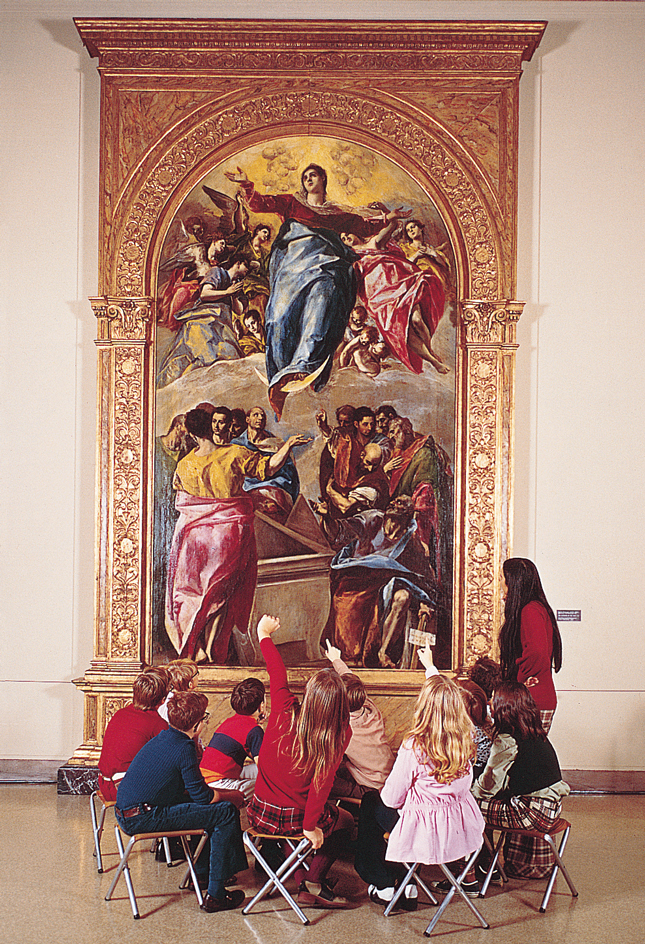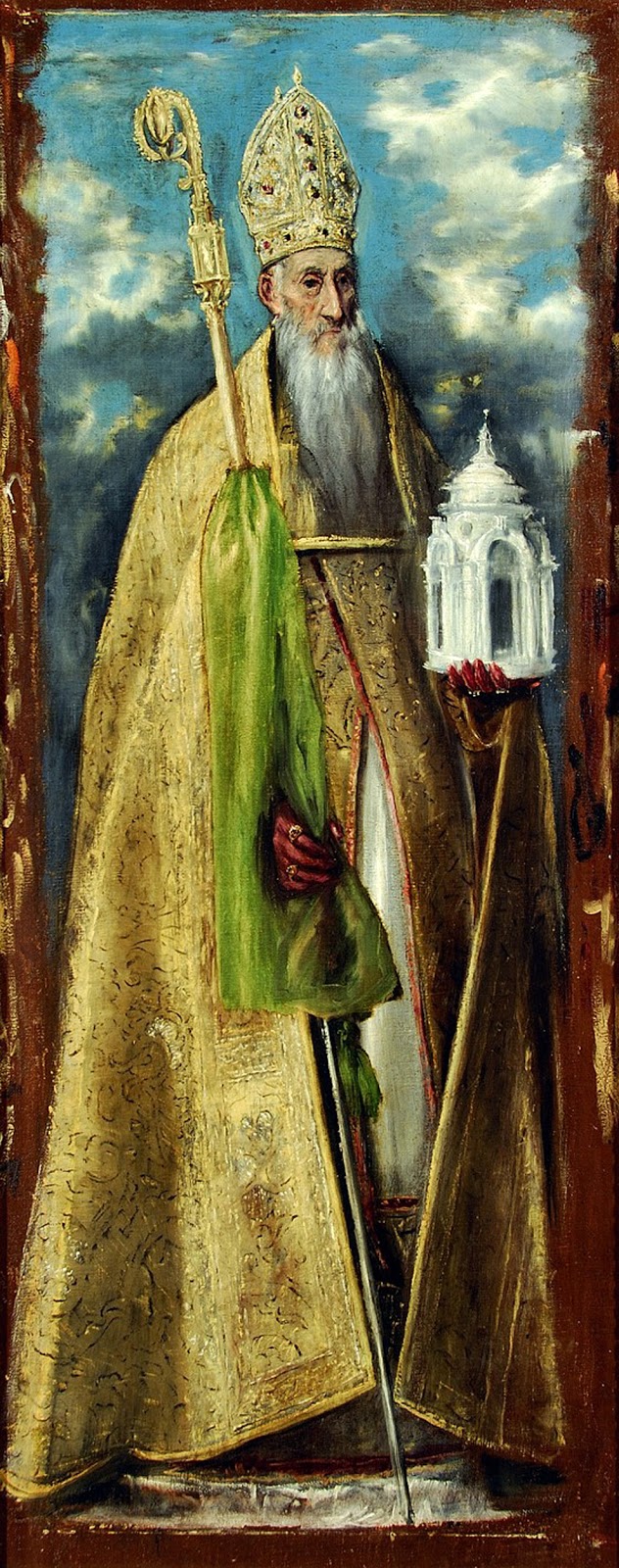Greco, El, << GREHK oh, ehl >> (1541?-1614), was one of the world’s great painters. He was born Domenikos Theotokopoulos in Candia (now Iraklion), Crete, but did most of his work in Spain. The Spaniards called him El Greco (the Greek).
El Greco was a master draftsman whose works combine courtly elegance with religious fervor. He intentionally elongated and distorted forms to emphasize the spiritual quality of a figure or event. His saints are ghostly creations of his imagination. But his portraits of nobles are elegant and realistic.

In 1559 or 1560, El Greco left Crete to study in Venice. He studied there for 10 years and then in Rome for 7 years. His mature work is based on the Venetian version of the style called Mannerism, practiced by such artists as Tintoretto. El Greco’s version of this style is characterized by graceful, elongated forms and metallic colors with white highlights.
Seeking patronage, El Greco went to Spain in 1577, where King Philip II was hiring artists to work on the palace and monastery of the Escorial. Unfortunately for El Greco, the king disliked his great painting of the Martyrdom of St. Maurice, and the painter never gained royal favor. He settled in Toledo, the religious center of Spain. There, he created many great paintings and portraits. El Greco painted his masterpiece, The Burial of Count Orgaz, for the Church of Santo Tome in Toledo, in 1586. In this painting, the realistic drawing and color of the lower, earthly portion of the painting contrasts with the abstract forms in the upper, heavenly section of the work. El Greco’s son is the boy in the lower left side of the painting.

After 1600, El Greco’s style involved more distortion of light, space, and form. His painting View of Toledo is not a realistic view of the city but rather an expression of his feelings about his adopted home. This dramatic landscape and other late paintings, such as the Laocoon, had a profound influence on the Expressionist painters of the 1900’s. El Greco died on April 7, 1614.
